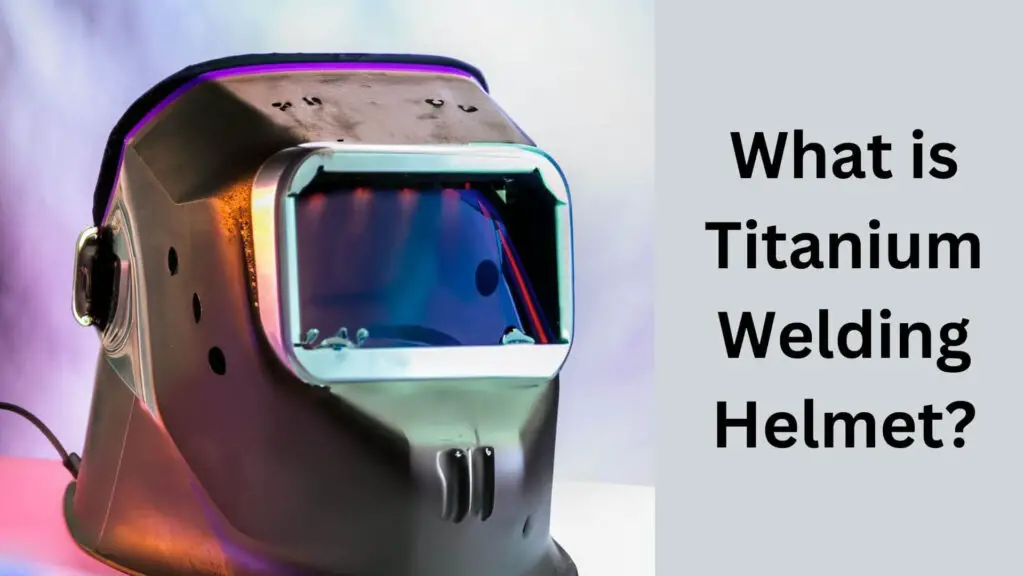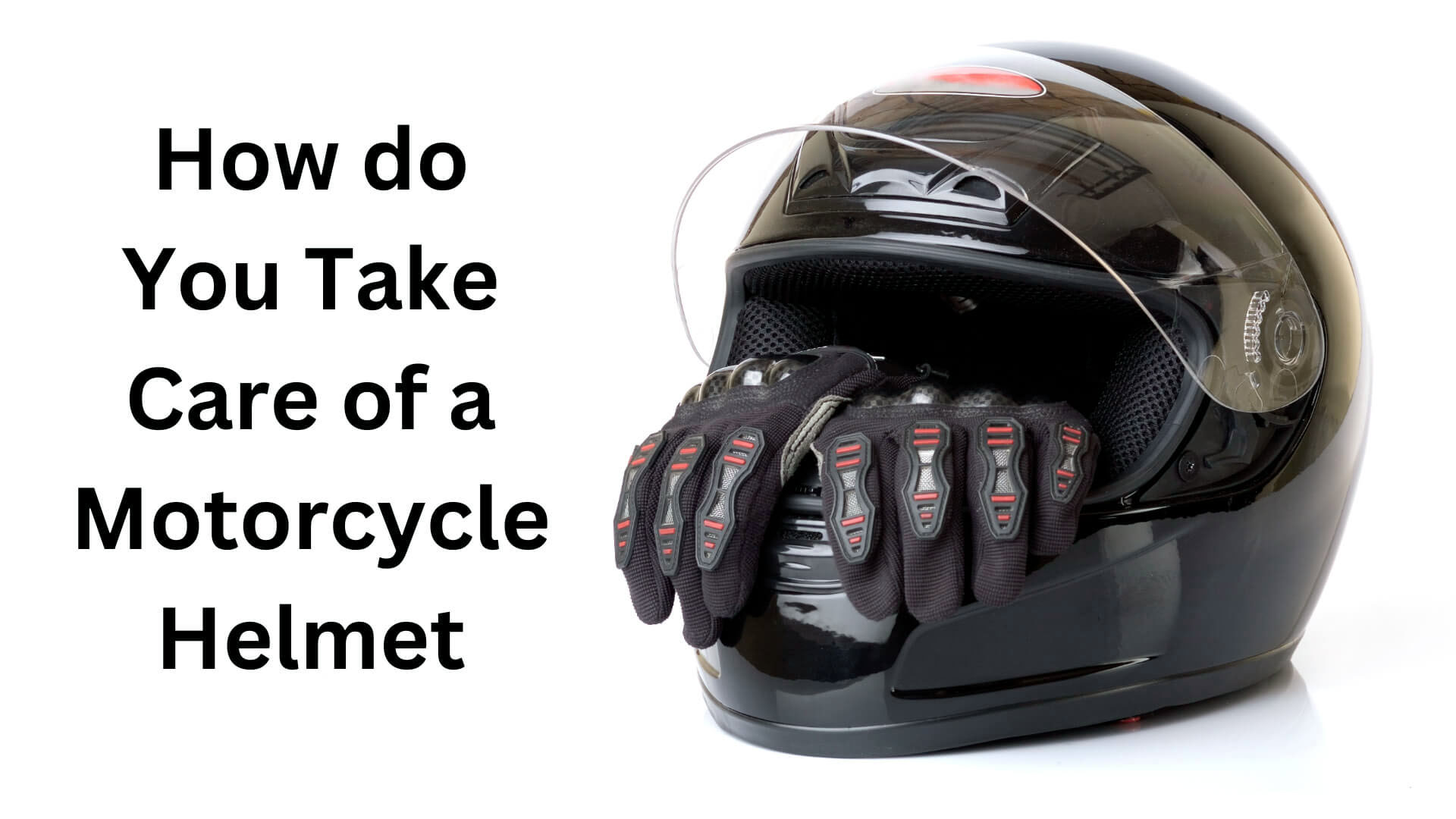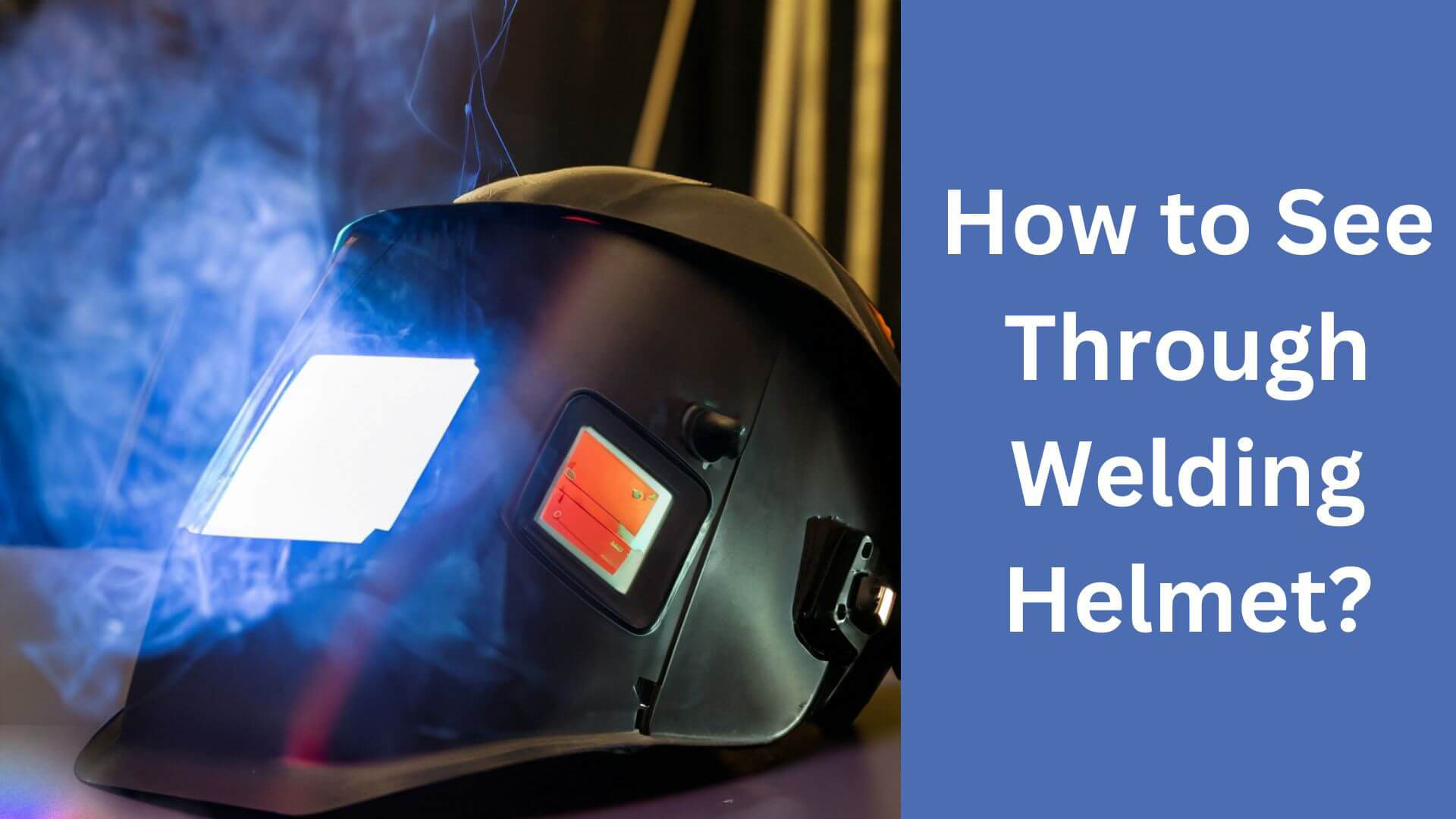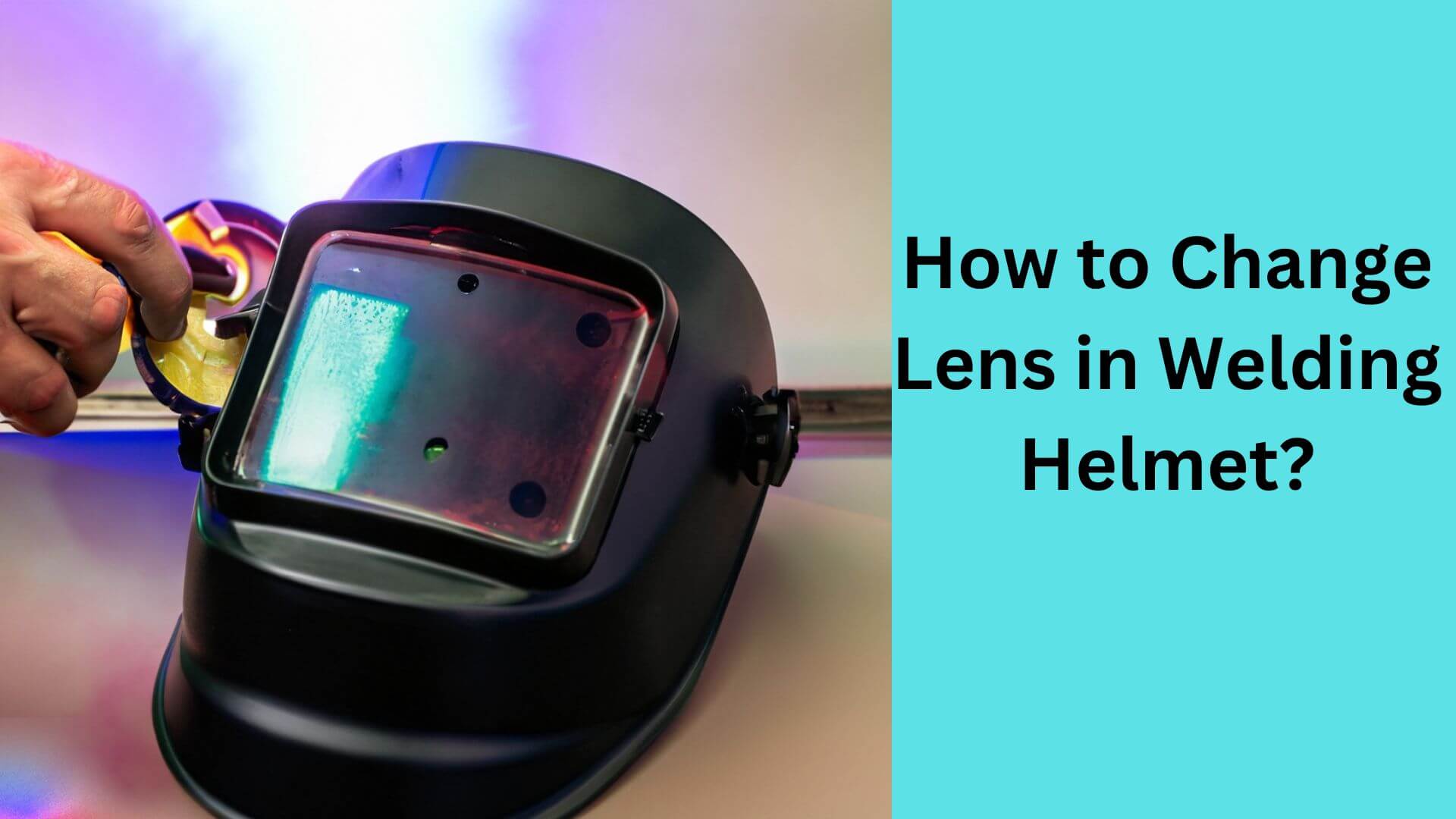How to Turn off Titanium Welding Helmet? Mastering the Shutdown

As a welder, your safety should always be a top priority. Do you know how to turn off a titanium welding helmet safely?
The short answer is: To turn off a titanium welding helmet, press and hold the power button until the helmet turns off. Some helmets may have a separate switch or button to turn the auto-darkening feature on and off. Turning off the helmet after use is essential to preserve battery life and ensure safety.
In this article, I will guide you on how to turn off a titanium welding helmet using the power button and review some of the most common welding helmets available in the market.
What is Titanium Welding Helmet?

A Titanium Welding Helmet is a welding helmet that provides superior protection to the eyes and face of the welder from the intense light and heat produced during welding. To turn off a titanium welding helmet, flip it up and press the power button.
Understanding The Importance Of Turning Off Your Titanium Welding Helmet
Titanium welding helmets protect your eyes and skin from dangerous UV radiation while welding.
Once the welding process is over, properly turning off your welding helmet is essential for various reasons. Below are some reasons you should turn off your titanium welding helmet.
1. Protecting Your Eyes From Uv Radiation

- Uv radiation is dangerous, even if it is just for brief periods, and can cause severe damage to your eyes and skin. Turning off your titanium welding helmet is necessary to protect your eyes from prolonged exposure to harmful UV radiation.
- Turning off your helmet also ensures the filter cartridge inside the helmet is not damaged by prolonged exposure to sunlight. The UV radiation from sunlight can damage the filter cartridge, reducing the helmet’s lifespan.
2. Avoiding Eye Strain And Fatigue
- Welding can cause eye strain and fatigue, leading to headaches and discomfort. Continuous electrical supply and bright light can exert some pressure on the eyes. While not in use, turning off the helmet can help relieve the eyes from constant strain and reduce fatigue.
- This practice will also ensure the helmet’s battery life is not drained unnecessarily, saving you money on battery replacements.
3. Extending The Life Of Your Welding Helmet
- It is common knowledge that proper maintenance increases the lifespan of any equipment. The same applies to welding helmets. Turning off the helmet when not in use can prevent it from overheating, which can cause damage to its internal systems, including the fan, battery, and filters.
- Switching off the helmet will ensure that the helmet’s lifespan is extended, ultimately saving you money in the long run.
4. Ensuring Safety In The Workplace
- Welding accidents can lead to severe injury or even death. Switching off your titanium welding helmet after use is crucial for safety reasons in the workplace. It ensures there is no possibility of the helmet automatically turning on accidentally and causing an incident.
- Keeping your helmet powered off when not in use is also important economically, as it reduces the chances of accidental falls or incidents resulting from improperly stored equipment.
The importance of turning off your titanium welding helmet must be considered. It protects your eyes from harmful radiation, reduces eye strain and fatigue, extends the helmet’s lifespan, and ensures safety in the workplace. It may seem like a small act, but its benefits cannot be overstated.
Remember always to turn your welding helmet off when not in use.
Steps To Turning Off Your Titanium Welding Helmet
Step 1: Identify The Location Of The On/Off Switch
When turning off your titanium welding helmet, the first step is to identify the location of the on/off switch. This switch can be found on the side of the helmet, typically on the right-hand side. Here’s what you need to do:
- Look for the switch on the side of the helmet
- Use your fingers to feel for the switch if you can’t see it
- Make sure you’re in a safe position before turning off the helmet
Step 2: Check That The Welding Arc Is Completely Out
Before turning off your titanium welding helmet, ensuring that the welding arc is entirely out is crucial. Take this step to avoid damaging your welding equipment or even hurting yourself. Here’s what you need to do:
- Wait for the welding arc to completely cool down
- Look at the material you were welding – if it’s still glowing, it means the arc is still on
- Check that the gas has stopped flowing – if it’s still flowing, then the arc is likely still on
Step 3: Turn The Helmet Off Carefully And Correctly
Now that you’ve ensured the welding arc is entirely out, it’s time to turn off your titanium welding helmet carefully and correctly. Here’s what you need to do:
- Locate the on/off switch on the side of the helmet
- Flip the switch to the “off” position
- Wait for the helmet to power down completely
- Double-check that the helmet is off before taking it off
Step 4: Ensure Proper Storage Of Your Welding Helmet
Once you’ve successfully turned off your titanium welding helmet, it’s essential to store it correctly to ensure it lasts a long time. Here’s what you need to do:
- Clean your welding helmet after use
- Store it in a dry, cool place away from direct sunlight
- Keep the helmet in a protective bag or case when not in use
- Check the helmet’s manual for any additional storage instructions
Remember, turning off your titanium welding helmet is essential to protecting the life of your equipment, so be sure to follow each step carefully. These tips allow you to enjoy a safer and more efficient welding experience.
Read More: How to Turn off Grind Mode on Welding Helmet?
How To Troubleshoot Common Issues When Turning Off Your Titanium Welding Helmet?
If you’re using a titanium welding helmet, you may have some issues with turning it off. Don’t worry; these issues are common and can be easily troubleshooted.
Here I will discuss some common issues you may face when turning off your titanium welding helmet and how to fix them.
1. The Helmet does Won’T Turn Off.
One of the most common issues people face with their titanium welding helmet is that it won’t turn off. If you find yourself in this situation, try the following:
- Check the battery: If your helmet is battery-powered, the problem might be that the battery is low or dead. Replace the battery and try turning off your helmet again.
- Check the sensor: Welding helmets come with sensors that detect light and darkness. If the sensor is dirty or malfunctioning, it might not be able to detect when you’ve finished welding. Clean the sensor or replace it if necessary.
- Check the switch: It might be a simple case of the switch not working correctly. Ensure you’re pressing the switch hard enough and check whether the switch needs replacing.
2. The Helmet Turns Off By Itself
If your titanium welding helmet turns off itself, it can be frustrating and dangerous. Here are some reasons why this might be happening:
- Battery issues: If your helmet is battery-powered, the problem might be with the battery. The battery might be low or dying, causing the helmet to turn off. Consider replacing the battery and see if it helps.
- Sensor problems: Sensors in welding helmets can malfunction and cause the helmet to turn off unexpectedly. Check the sensor and replace it if it is dirty or damaged.
- Malfunctioning components: Some components in the welding helmet could be defective, causing the helmet to turn off. Check whether the helmet is still under warranty and get it repaired or replaced if necessary.
3. The Helmet Is Stuck On The On Position
If your titanium welding helmet won’t turn off and is stuck in the on position, this is a severe problem that can lead to battery drain. Here are some things you can try:
- Check the battery: If your helmet is battery-powered, the battery might be low or die. Replacing the battery might solve this problem.
- Sensor issues: The sensors that detect light and darkness in welding helmets can malfunction, causing the helmet to stay on. Replace or clean the sensor.
- Check for malfunctions: Some components in the helmet might be defective and causing the issue. Take the helmet to an expert or repair shop to diagnose and repair the issue.
4. The Helmet does Won’T Stay On
Another common issue that you may face is the helmet turning off after a few seconds or minutes. It can be frustrating to keep turning on the helmet after every few seconds. Here are some things that you can try:
- Check the battery: If your helmet is battery-powered, the battery might be low or die. Replacing the battery might solve this problem.
- Sensor issues: Sensors in welding helmets can malfunction and cause the helmet to turn off unexpectedly. Check and clean the sensor if it’s dirty or damaged.
- Check for malfunctions: Some components in the helmet may be defective, causing the helmet to turn off after a few seconds. Get the helmet repaired by an expert.
Turning off your titanium welding helmet can be a breeze once you understand what’s causing the issue. Follow the abovementioned steps, and check for malfunctions, dirty sensors, and low batteries. Keep your helmet in top-notch condition and never face any welding issues again!
Read More: How to Put Band in Welding Helmet?
Bonus Tips For Extending The Life Of Your Titanium Welding Helmet
Welding helmets are essential for welders to protect their eyes and face from harmful welding rays. Thus, investing in a high-quality helmet is crucial, especially for titanium welding. But aside from purchasing a top-of-the-line helmet, you must maintain it properly to extend its life.
Here are some tips to help you keep your titanium welding helmet in excellent condition:
Avoid Dropping Your Helmet
A titanium welding helmet is sturdy and can withstand a few bumps, but dropping it can cause significant damage to the helmet. The helmet’s sensitive components can be jumbled and misaligned, resulting in poor performance and exposure to sunlight, water, and other elements.
To avoid this, it’s best to avoid dropping your helmet. Store it in a secure place and place it down gently after use.
Store Your Helmet In A Cool, Dry Place
Storing your helmet in a cool, dry place when not in use can help prevent damage. Exposure to direct sunlight or moisture can cause the helmet’s optical clarity to fade and damage its lens, significantly reducing its effectiveness. Therefore, storing your helmet free of dampness, moisture, dust, and dirt is best.
Read More: How to Open Chicago Welding Helmet?
Clean Your Helmet Regularly
Your helmet can accumulate grime and dirt over time, reducing its performance and clarity. Thus, cleaning your helmet regularly and maintaining its performance is essential. Use a soft cloth, soap, and lukewarm water to clean the helmet’s exterior and interior.
Ensure not to scratch the helmet’s lens with an abrasive substance while cleaning, which can significantly lessen its optical clarity.
Check For Any Damages Or Defects
Regularly checking for any damage or defects to your helmet is crucial since defects can occur over time. Defects such as cracks, scratches, torn straps, and degraded components can compromise the helmet’s effectiveness and reduce the user’s safety. Always examine your helmet for damage or defects before you use it.
If you find any defects in your helmet, get it repaired or replaced as soon as possible. By following these tips, you can extend the lifespan of your titanium welding helmet and keep it in top performance.
Regular cleaning, proper storage, and handling of your helmet can maintain its integrity, effectiveness, and safety, providing a reliable and top-performing welding helmet for your titanium welding needs.
Read More: How to Add Lights to a Welding Helmet?
Frequently Asked Questions For How To Turn Off Titanium Welding Helmet
How Do You Turn Off A Titanium Welding Helmet?
Hold the power button for 3 seconds until the display turns off.
Why Won’t My Titanium Welding Helmet Turn Off?
Check if the batteries are low. If not, the power button may be stuck, and you need to inspect it.
Can I Turn Off My Titanium Welding Helmet During Use?
No. Do not turn off your welding helmet during use, as it protects your eyes and faces from sparks.
How Long Does A Fully Charged Titanium Welding Helmet Last?
Depending on the model, a fully charged helmet lasts about 8 hours of continuous use.
How Often Should I Charge My Titanium Welding Helmet?
It depends on how often you use it. A good rule of thumb is to charge it after every use.
The Final Summary
Now that you know how to turn off your titanium welding helmet, you can safely and efficiently complete your welding tasks. Remember to follow the manufacturer’s instructions carefully to properly turn off your helmet and disengage the auto-darkening feature.
Properly storing your helmet is also essential to keep it safe from damage. By turning off your helmet correctly, you can help extend the life of your equipment and avoid costly repairs or replacements.
I hope this guide has been helpful and informative and that you are ready to use your newfound knowledge. With the proper technique and practice, you can quickly and effortlessly turn off your titanium welding helmet before, during, and after each use.

Hey, I’m Hrithik Hossain. I am the head of helmethacks.com, which specializes in safety helmets. I am looking to connect with anyone interested in purchasing a helmet or who has any questions about different types of helmets. I have over 8 years of experience as a helmet expert, and I can’t wait to help you find the perfect helmet for you. I can help you with any questions regarding helmets, from the best brands to fitting, style, and more! I really enjoy keeping people safe by ensuring they have the best protection possible.







